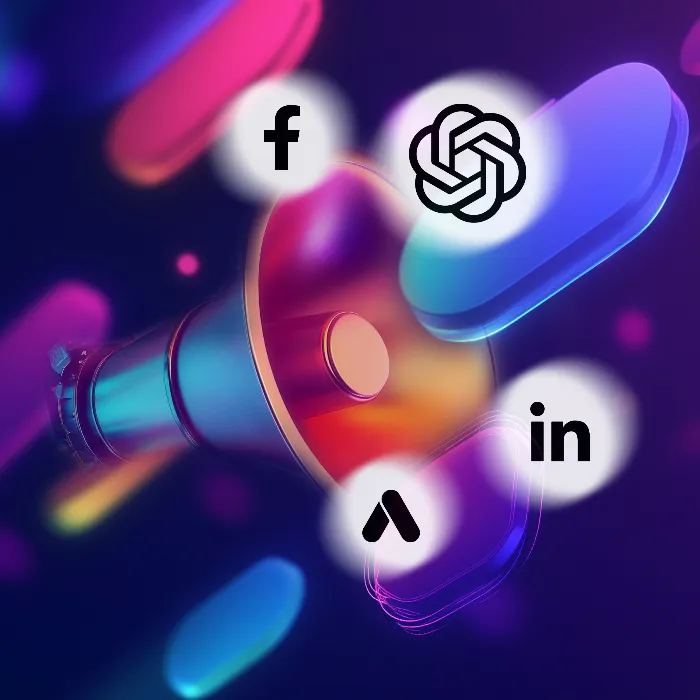Effective advertising starts with a compelling headline. You only have a few seconds to grab the attention of your target audience and make them want to learn more about your product. In this guide, you will learn how to create engaging Headlinesfor Facebookand Googleads to drive both clicks and conversions. Let's dive straight into the best practices!
Main takeaways
- Headlines should be clear, concise, and emotionally appealing.
- Using main keywords is crucial for increasing relevance.
- Scarcity and urgency encourage impulse purchases.
- Consider different strategies for Facebook and Google.
Step-by-Step Guide
Step 1: Analyze your target audience and pain points
To create an effectiveheadline, you must first know your target audience and their pain points. Make sure you have a clear picture of what motivates your audience and what problems they have. This information is crucial for tailoring your advertising message accordingly.
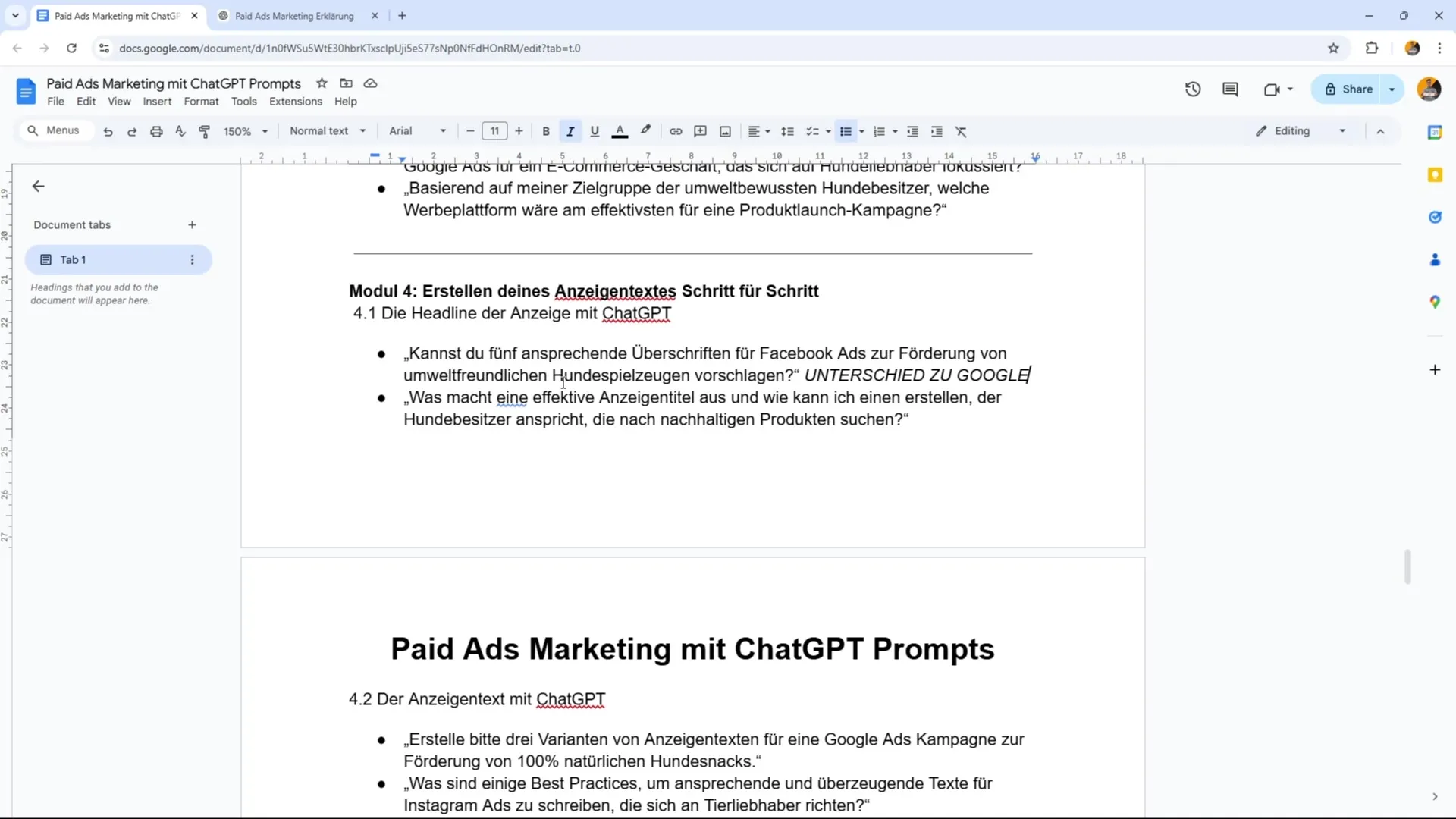
Step 2: Keyword integration
Once you have identified the pain points of your target audience, you should integrate relevant keywords into your headlines. In Facebook advertising, titles are displayed individually, while Google ads combine titles. Be sure to include important terms like “dog toy” and “sustainable”.
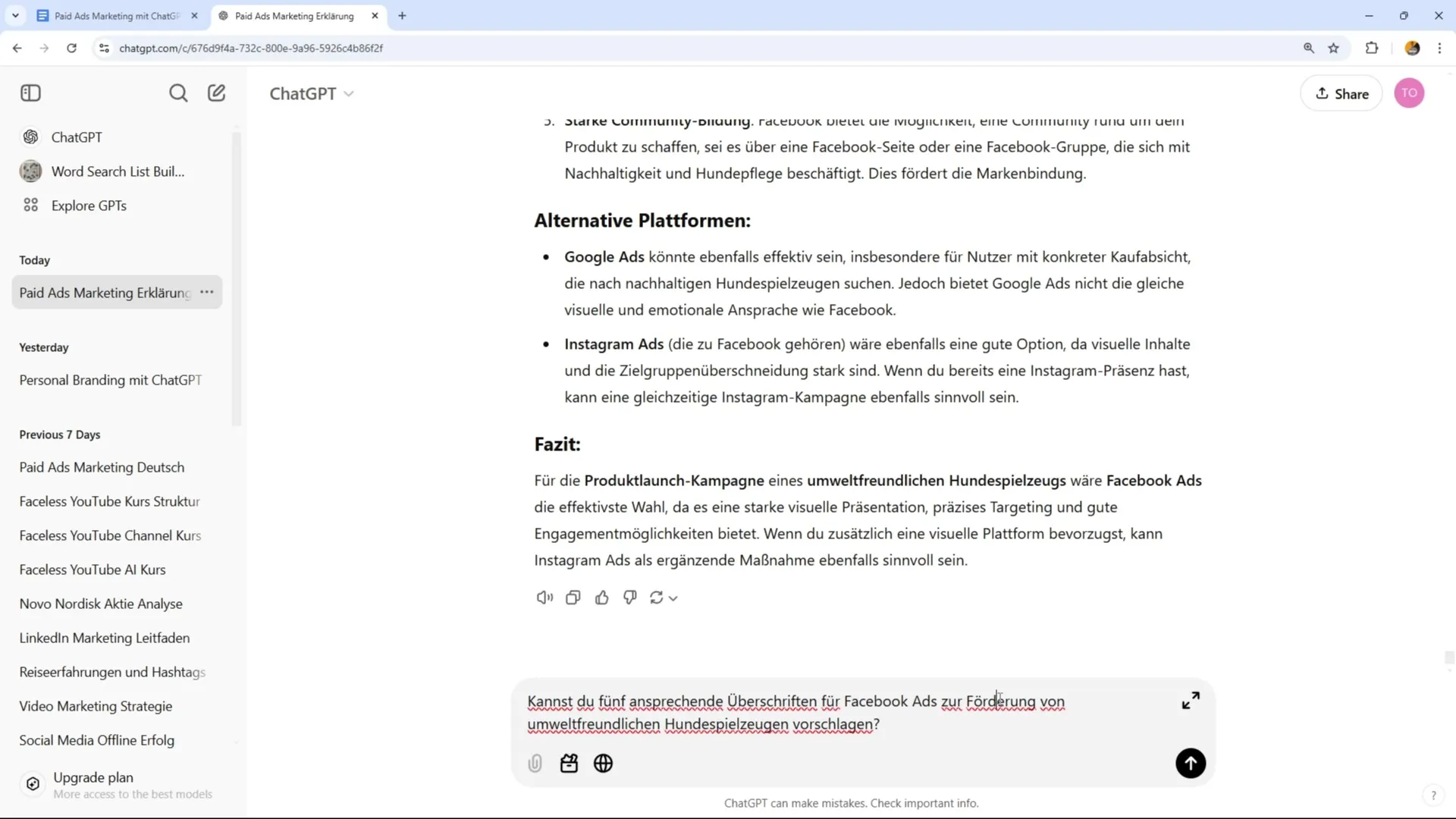
Step 3: Create engaging headlines
Now comes the creative part: develop several engaging headlines. They should be both emotionally appealing and informative. Use metaphors or vivid language to spark interest. For example, a title like “Protect your dog and the Earth” or “Discover sustainable toys” could attract potential customers.
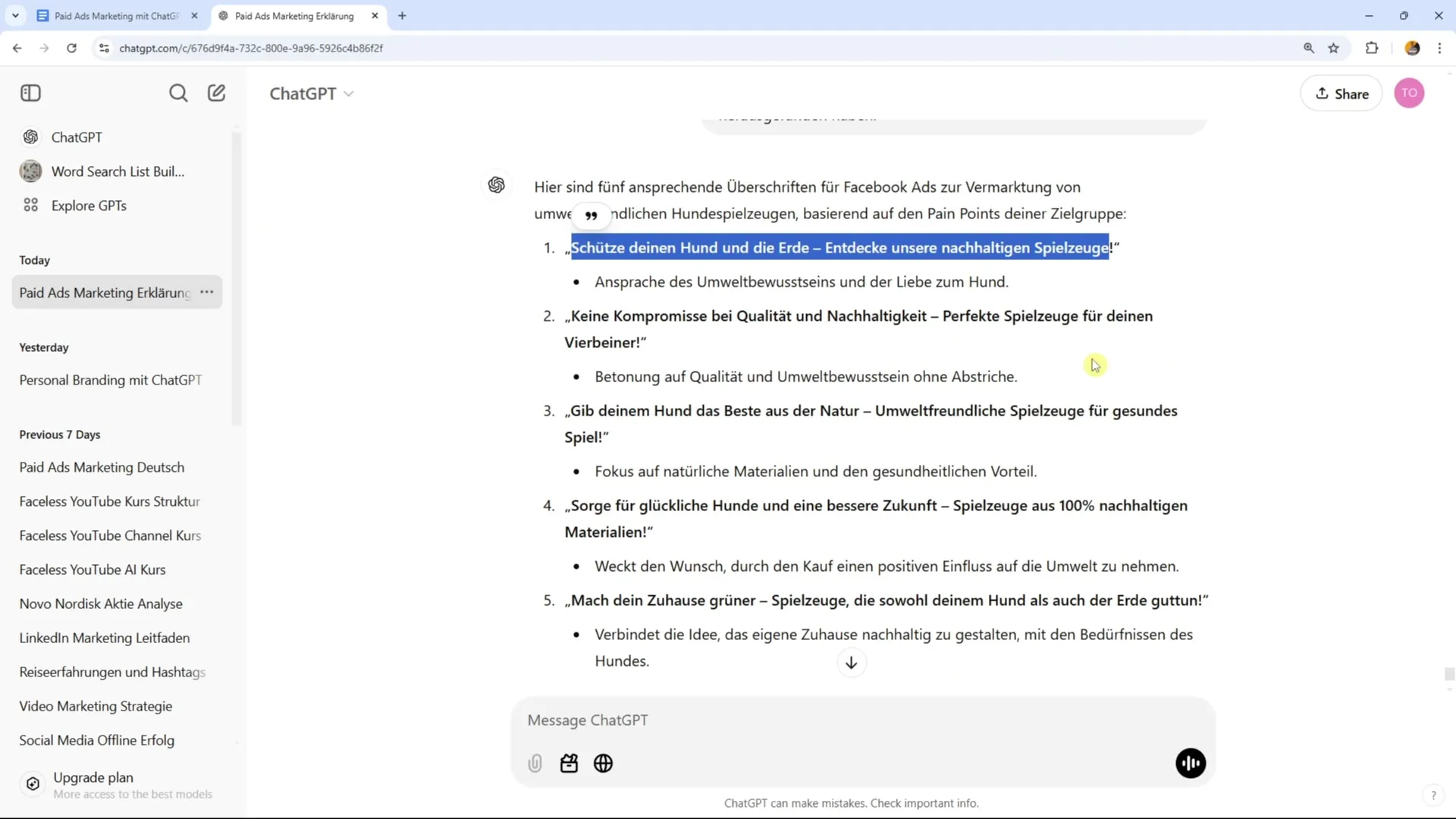
Step 4: Proper formatting for Google Ads
For Google Ads, it is important to keep titles shorter and more concise. Since titles are displayed in combination, remember to use variations that work together without losing meaning. For example, you could use “Protect your dog” and “Perfect toys for your four-legged friend” as a combination.
Step 5: Emotional appeal
Emotionally charged messages are crucial for the performance of your ads. Instead of highlighting discounts, focus on describing a happy and healthy dog. A statement like “A healthy dog is a happy dog” appeals to emotions and fosters a connection to the brand.
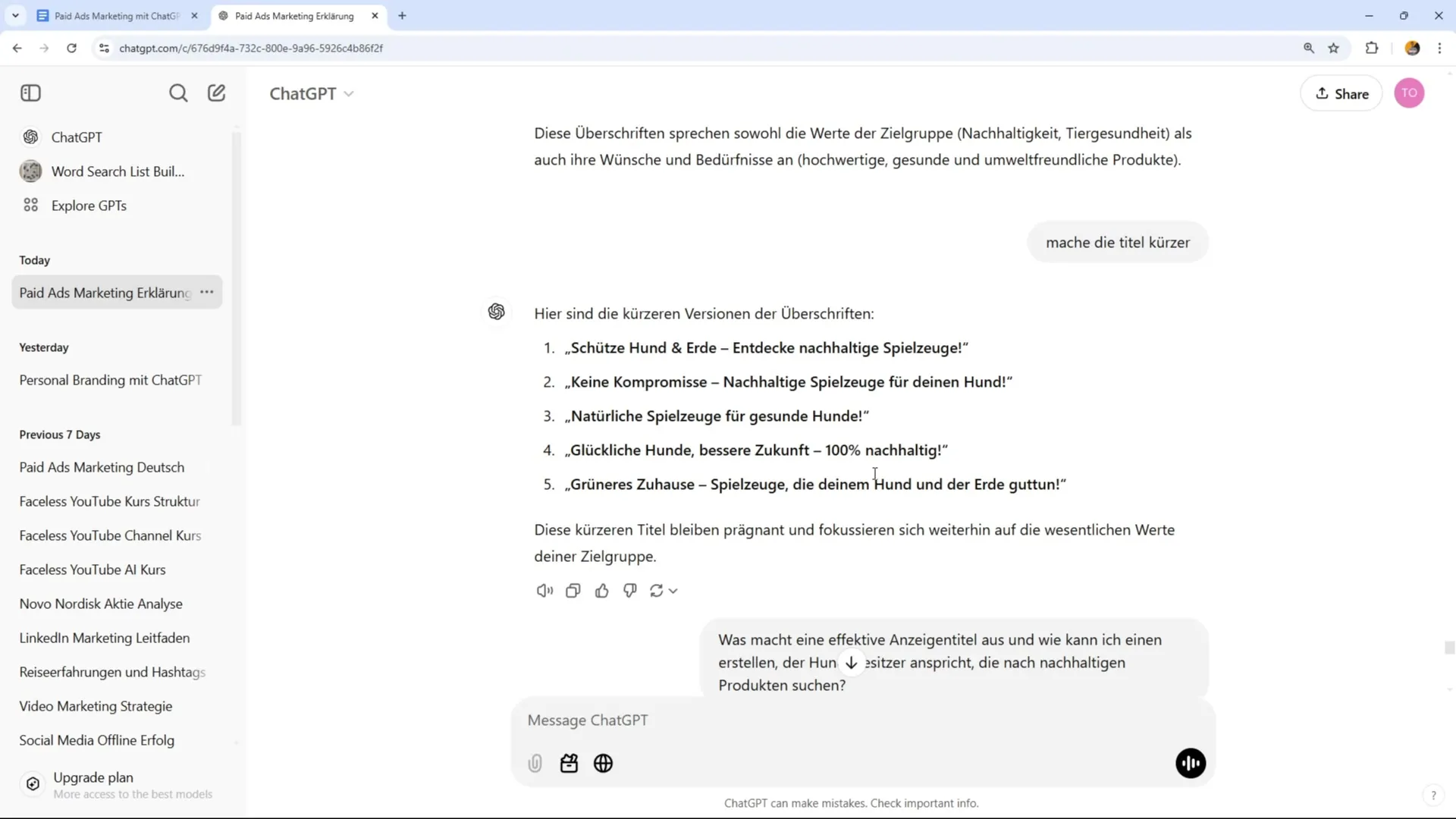
Step 6: Optimize your call to action
Your headline should not only inform but also prompt action. Use persuasive techniques like “nudging” to encourage customers to buy without directly saying “buy now”. Examples could be: “Exclusive offer – for a limited time only” or “Only a few pieces available”.

Step 7: Formulate a sales-strong combination
Combine the pain points with a clear value proposition and urgency. Make sure this mix resonates with your target audience. A possible structure could be: “Save the Earth with sustainable toys for your dog - offer valid today only.”
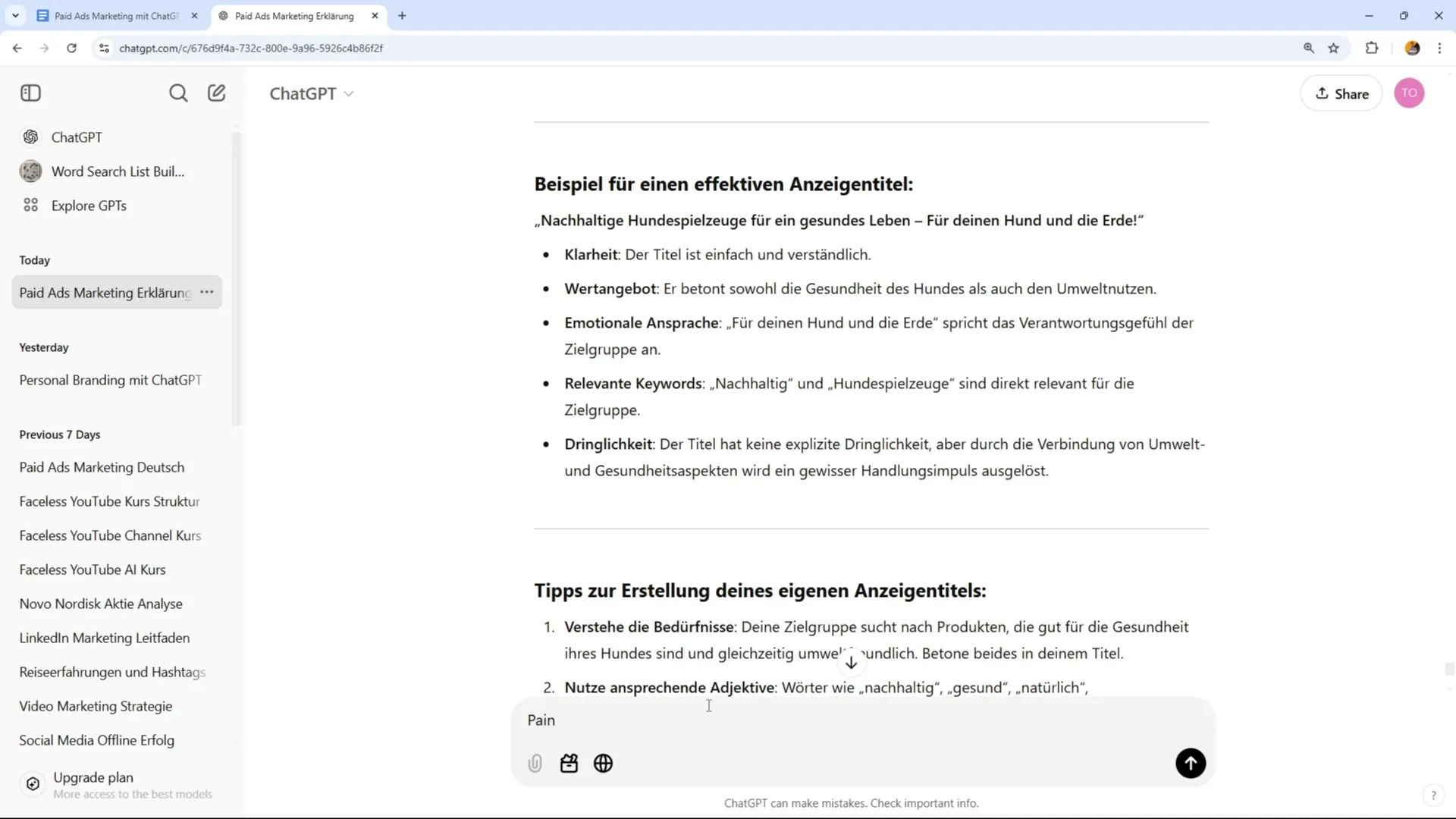
Summary – Headline for creating Facebook & Google Ads: A comprehensive guide
To get the most out of your ads, it is important to use main keywords, utilize emotional appeal, and provide clear calls to action. Consider the differences between Facebook and Google ads and adjust your headlines accordingly. With these strategies, you can develop effective headlines that drive both clicks and conversions.
FAQ
How important is the selection of the right keywords for my ads?The selection of the right keywords is crucial for reaching your target audience and increasing the relevance of your ads.
Why should I use emotional language in my headlines?Emotional language addresses the needs of your target audience and fosters a stronger connection to the brand.
What is nudging and how does it work in advertising?Nudging means guiding customer behavior in a desired direction without directly calling for a purchase, e.g., through scarcity or time-limited offers.
How long should ad titles be, especially for Google Ads?For Google Ads, titles should be short and concise, ideally no more than 30 characters, to ensure they are fully displayed.
